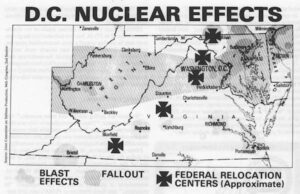The two men came together in the lobby of a Virginia conference center and started to argue about the effects of nuclear war. One of them, young, bearded and earnest, was a member of Physicians for Social Responsibility, an organization which has been spreading the message that a nuclear war would destroy “the economic, ecologic, and social fabric on which human life depends” and that “there is no effective civil defense” against nuclear attack.
The second man, older and balder but equally earnest, was an employee of the Federal Emergency Management Agency, which is in charge of planning civil defense for nuclear war and has been spreading the message that “reasonable steps” can “greatly mitigate…the deaths and suffering that would result from a nuclear disaster.”
The two men were finding little common ground.
“You can say 30 million people will be saved by civil defense,” the young doctor said scornfully to the civil servant, “but if there’s any evidence for it you’d be able to get at least one physician to go on record and say so.”
“Some have,” replied the older man, “at least one or two.”
The physician pounced. “Where was it published?”
The civil servant was prepared. “There was an article recently in the Journal of Civil Defense, a pro-civil defense publication you may not have seen,” he said, and handed the doctor a copy.
The doctor glanced at the magazine and then tossed it aside. “This article,” he said dismissingly, “doesn’t have a single citation.”
So, for want of a footnote, an argument was lost, or at least stalemated. And the precise body count following a nuclear attack was left unresolved.
In the current atmosphere of intense debate about the nuclear arms race and a $4.2 billion civil defense program proposed by the Reagan Administration, facts about the effects of nuclear war fly freely back and forth. Many presentations of the Physicians for Social Responsibility and other groups warning of the dangers of nuclear war consist of almost nothing, but such facts. Over and over again audiences are regaled with accounts of how x million people would die of y and z after a one-megaton bomb was dropped on the Empire State Building, or the Hollywood Bowl. A newspaper report on one such meeting began: “If a one-megaton nuclear device were exploded over New York City, it would probably kill 2.25 million people immediately, seriously injure an additional 3.6 million, destroy all frame houses within five miles of the detonation point and inflict third-degree burns on those living within eight miles of ground zero, a group of physicians and nuclear physicists agreed yesterday.”

The recitation of facts like these is designed to mobilize people to do something about the threat of nuclear war, and such recitations have undoubtedly contributed to the growth of the anti-nuclear arms race movement in this country in recent months.
Those who recite these facts at political meetings can do so with little fear of contradiction, because the short-term, close-range effects of nuclear weapons have been well established by studies of the atomic bombings of Japan and of more than 150 atmospheric nuclear tests conducted by the United States before the Limited Test Ban Treaty of 1963. The United States government, in fact, publishes an exhaustive reference work called The Effects of Nuclear Weapons, which comes complete with a nuclear bomb effects slide rule. By manipulating its dials, one can quickly determine, for example, that a 165-pound man standing in the open one mile away from a 1/2-megaton nuclear explosion would receive 10,000 rems of initial nuclear radiation (more than twice the dose required to kill him almost instantly), would be seared by heat amounting to 500 calories per square centimeter (more than 50 times the amount required to give his fatally irradiated body third-degree burns), and would be sent flying through the air by the blast wave at a rate of more than 100 feet per second.
Of course, no one would argue that a sidewalk a mile away from a nuclear explosion is a healthy place to be, but the facts concerning the effects of nuclear weapons over far greater distances and longer periods of time are not so clear-cut, and they are beginning to take on political importance. The civil defense program supported by the Reagan Administration, for example, would rely on evacuating residents of likely target areas to “host communities” 100 to 200 miles away, and much of the debate over the program has centered on whether being 100 miles away from the nearest target area would really do a person any good in a massive nuclear war, or if evacuation would only postpone the deaths of the evacuees.
What the issue boils down to is a debate over Doomsday. Would a nuclear war be the end of life as we know it, no matter what precautions were taken, or would it be a terrible but not terminal disaster from which the survivors could recover and rebuild a recognizable society? “Recovery from nuclear war would be impossible,” say the Physicians for Social Responsibility and other similar groups. “In years of research no insuperable barrier to recovery has been found,” FEMA has replied. Another voice and point of view was added to the debate this spring with the publication of Jonathon Schell’s The Fate of the Earth, a critically acclaimed book in which Schell argues not only, as others have, that nuclear war would destroy hundreds of millions of people and all modern human society, but that nuclear war would very likely result in the extinction of the human race.
What are the facts of the matter? What would be the long-term, worldwide effects of a nuclear war? Nobody can say for sure because nobody has ever seen a nuclear war, and, as Jonathan Schell notes, “We are not in possession of any spare earths that we might blow up in some universal laboratory in order to discover their tolerance of nuclear holocausts.”
So everybody, on all sides of the debate, is forced to rely on the same body of ambiguous scientific literature. Not surprisingly, those with different viewpoints tend to see the evidence differently. Some of the most striking examples of extreme perspectives have centered on Hiroshima. T.K. Jones, a Deputy Undersecretary of Defense and civil defense advocate who recently aroused controversy by asserting that “everybody” could survive a nuclear war “if there are enough shovels to go around,” addressed the subject of Hiroshima in a presentation to a Congressional committee several years ago. His presentation included a number of photographs taken shortly after the atomic bombing, photographs which recorded scenes of endless rubble and devastation surrounding the few remaining buildings. In one of the photos, Jones said, “the grotesquely twisted dead tree in the foreground symbolizes the awesome, life-destroying powers of the blast. It also diverts attention from the surviving buildings in the center of the photo.”
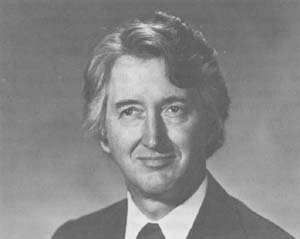
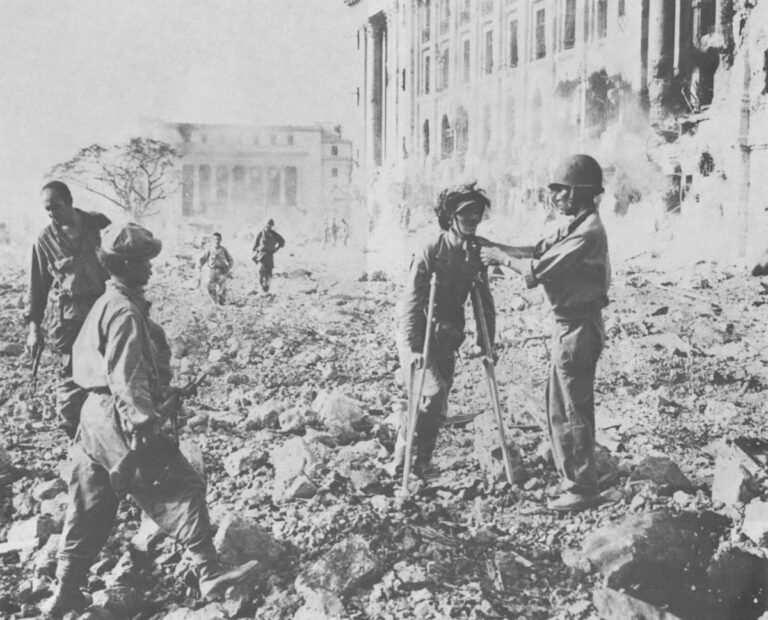
It was on the surviving buildings, not the rubble of the destroyed ones, that Jones invited his audience to focus. “If we fix on the impressions of Figures 1 and 2 [the most desolate-looking photos], we can convince ourselves that nuclear war would be the end of all mankind,” Jones said. “If we examine carefully that which has survived nuclear detonations, it is possible to construct a program for national survival of a nuclear war.” He went on to note that, “the day after the explosion, many bridges were open to traffic and electric service was restored in some areas. On the second day, trains were again operating.”
Any upbeat conclusions about nuclear war based on a study of Hiroshima are undercut by the fact that the city was struck by only one, relatively tiny, atomic bomb, while the kind of nuclear war facing the United States and Soviet Union today would involve the detonation of thousands much more powerful weapons. One of the few scientific studies of the effects of such a war is Long-Term Worldwide Effects of Multiple Nuclear-Weapons Detonations, which was published by the National Academy of Sciences in 1975 and immediately became a subject of controversy. The report concentrated on the effects a massive nuclear war would have on non-combatant nations thousands of miles away from the detonations and was accompanied by a letter from then-NAS President Philip Handler, who concluded “Homo sapiens–but not necessarily his civilization–would survive a major nuclear exchange.”
In the days following the report’s release, Handler was criticized for drawing such an (in his words) “encouraging” conclusion from a report that dwelt mostly on highly technical details of such things as the possible effects of possible climatic changes on the Canadian wheat crop and was filled with expressions of uncertainty. “Present understanding of climatological phenomena is insufficient to predict these effects,” noted one study panel. “They would probably lie within normal global climatic variability, but the possibility of climatic changes of a more dramatic nature cannot be ruled out.”
No Hiding Place
Handler told reporters that he had actually intended to stress that there was “no hiding place” for anyone from the effects of a nuclear war and that he had only emphasized the probable survival of the human species because he had found that the impression that a nuclear war would destroy mankind had paralyzed public interest in the subject.
One of the key findings of the NAS report, and one that should seemingly have discouraged any optimistic conclusions, had to do with the layer of ozone in the earth’s atmosphere that shields the earth from the harmful ultraviolet radiation of the sun. One side effect of a large number of nuclear explosions, the study reported, would be a reduction of the ozone layer by as much as 70% in the northern hemisphere and 40% in the southern. A 70% reduction in the ozone layer, the report noted, could produce in anyone who wandered outside in daylight “a severe sunburn involving blistering of the skin…in ten minutes.” Ozone depletion could also, the report said, produce disabling and painful snow blindness (from sunburn of the cornea) among animals and humans in northern temperate zones.
These conclusions have been seized on by critics of the government’s civil defense program and other planning for nuclear war. “If high levels of ultraviolet radiation occur, then anyone who crawls out of his shelter after radiation from fallout has declined to tolerable levels will have to crawl back in immediately,” writes Jonathon Schell. He also evokes the general environmental chaos “as billions of blinded beasts, insects and birds begin to stumble through the world.”
But even here those who are disposed to plan for nuclear war find a way to take a more optimistic view. An article on “Doomie myths” by Bruce Clayton, a leading “survivalist” author, admonishes, “Remember that the high UV [ultraviolet] levels would be present only during the daylight hours. Nights would be normal. Humans would wear protective clothing and would stay out of the sun during the middle of the day. Wild animals already confine their activities to the night, early morning and early evening when UV levels would not be a problem. Even animals as stupid as cows have a history of sleeping in the shade during the day and grazing at night when suffering from sunburn….”
The United States government has also taken a relatively optimistic view of the state of the world after a nuclear war. More than 30 federal agencies have made plans for continuing their functions after a nuclear war, ranging from post-nuclear attack change of address cards being stockpiled by the Postal Service to elaborate plans by the Federal Reserve Board to reconstitute the banking system. In January, Deputy Undersecretary of Defense T.K. Jones was quoted by the Los Angeles Times as saying that the United States could recover from a nuclear war in two to four years.
After Jones’ remarks were published, a Senate committee summoned Jones and other Administration officials to account for his statements. Seeking to assure the Senators that the Reagan Administration fully appreciates the consequences of nuclear war, Assistant Secretary of Defense Richard Perle said, “I know of no one in the Administration…who thinks that even after five years we would not bear terrible scars of that catastrophe of unimaginable proportions.” But, to critics of the Administration, “even after five years” seems like a very short time to be even considering that there might not remain terrible scars from a nuclear war.
“This Administration comes in and talks about a winnable nuclear war, limited nuclear war…and the average American has looked and listened and been horrified,” said Sen. Paul Tsongas (D-Mass).
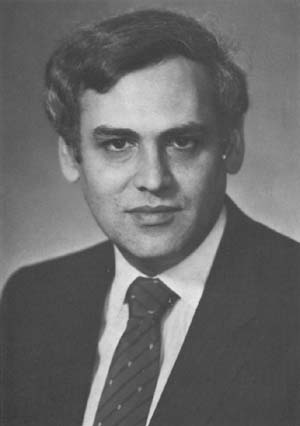
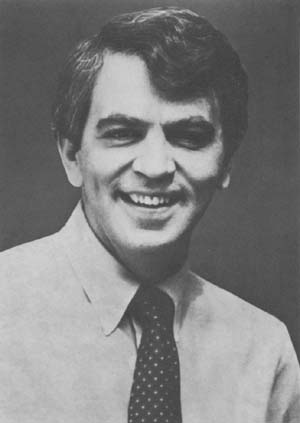
Uncertainties
Tsongas and the Administration witnesses fenced for hours over the basis of statements about nuclear war recovery, but whether the United States, or any other country, could ever recover from a nuclear war is simply something that cannot be proved ahead of time. “The impact of even a ‘small’ or ‘limited’ nuclear attack would be enormous,” a study by the Congressional Office of Technology Assessment concluded in 1979. It also concluded, “The effects of a nuclear war that cannot be calculated are at least as important as those for which calculations are attempted. Moreover, even these limited calculations are subject to very large uncertainties.”
In the face of such uncertainties, it would seem only prudent to err on the side of caution. Maybe a nuclear war would kill every human being on the planet and maybe it wouldn’t, but why take a chance on finding out?
“We reject categorically the argument sometimes heard that even a modest civil defense program will lead us to a false and reckless sense of security,” Assistant Secretary of Defense Perle told the Senate committee. “I don’t allow my two-year-old to play with matches just because I have fire insurance.” But FEMA literature still asserts, “A close look at the facts shows with fair certainty that with reasonable protective measures, the United States could survive nuclear attack and go on to recovery within a relatively few years.”
The concern of critics is that, in a crisis situation, an American President might believe that, and then we’d all have to find out if it’s true.
©1982 Ed Zuckerman
Ed Zuckerman concludes his fellowship study of the plans and planning for nuclear war with this issue.




